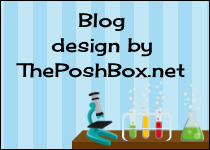Hey Science Friends,
Lots of things are going on in Science! And I finally got a good picture of our Science Gnome so I had to share it with you. I bet you are wondering what in the world we are going to use it for. Our Science Gnome is used as one of our objects of comparison when determining the mass of an object. Is it heavier or lighter than the gnome? Your object could be just about anything and you could have more than one object. We started by passing him around and just getting a good feel for him in the beginning. But I bet you are wondering how we are going to use him.
Learning how to describe properties in Kindergarten Science can be challenging. And my experience has taught me that teaching children to describe properties can be challenging at times. Developing this skill in Kindergarten is a foundational Science skill and it deserves time to develop. This one isn't a three week focus and never discussed again. Developing this skill takes time and the children in my classroom over the last 14 years have taught me this.
Books are a great way to get the discussion going and it gives us an opportunity to introduce and use new vocabulary. Tana Hoban has wonderful books that can be used when learning how to describe the properties of objects.
What are the ways we describe objects?
Shape
Size
Mass
Texture
Color
So, what is our objective here?
The student is expected to observe and record properties of objects, including relative size and mass, such as bigger or smaller and heavier or lighter, shape, color, and texture.
So, what does this look like in Kindergarten?
This can help while observing and describing an object by it's properties because it reminds us of the possibilities and this can be used when children write about their observations. This can also be used as a tool for a writing choice in Science.
What does it look like in the classroom?
After reading books and discussing properties as a class we have to get to investigating! You know we all want to get our hands on it and really investigate and eventually we want to be independent in this task.
A simple investigation box is set up to allow for some independent investigation. Just a few simple materials to observe and describe that can be found around any classroom is all you will need. If you swap out the materials on a regular basis you will have an investigation box that will help you keep this investigation going all year long! Simple set up, simple upkeep and simple investigations that keep the objective alive all year long as we develop observation skills and develop communicating like a Scientist. What is not to love here? If you would like to investigate with us just click on the investigation card and grab your copy. Have fun investigating Science friends!

































.JPG)












Thanks for the chart. I like the texture comparisons.
ReplyDeleteHow do I love they Miss Hypothesis? Let me count the hundreds of ways you have 'saved' me!
ReplyDeleteMarsha
A Differentiated Kindergarten